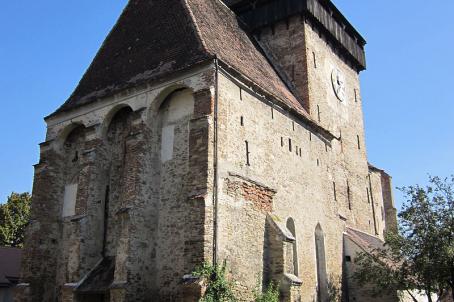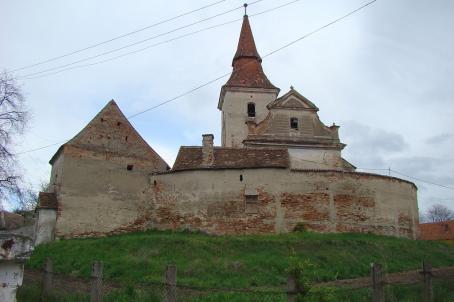Valea Viilor Fortified Church
In place of the 14th century initial construction, a new church was built in the 15th century. Around 1500, during the fortification phase, the ensemble received its present appearance. The chancel was rebuilt as a tower featuring three brick defence levels and 1,5 m thick walls. The forth level projects over the lower part and is supported by the arches between the buttresses. It has a battlement platform built in the timber frame technique. A defence level was constructed above the main nave and the northern and southern entrances were provided with defence systems. The bell tower is impressive through its numerous and manifold defence systems. The church was surrounded by a curtain wall with battlement walk on brick arches, two bastions and a tower, as well as a gate tower provided with a portcullis.
Inside the church a pew from 1528 was built during the transition phase between Gothic and Renaissance. The paintings of the altar were executed 1779 by Stephan Folbarth from Sighişoara.
About this building
For more information visit on this building visit https://kirchenburgen.org/en/location/wurmloch-valea-viilor/






